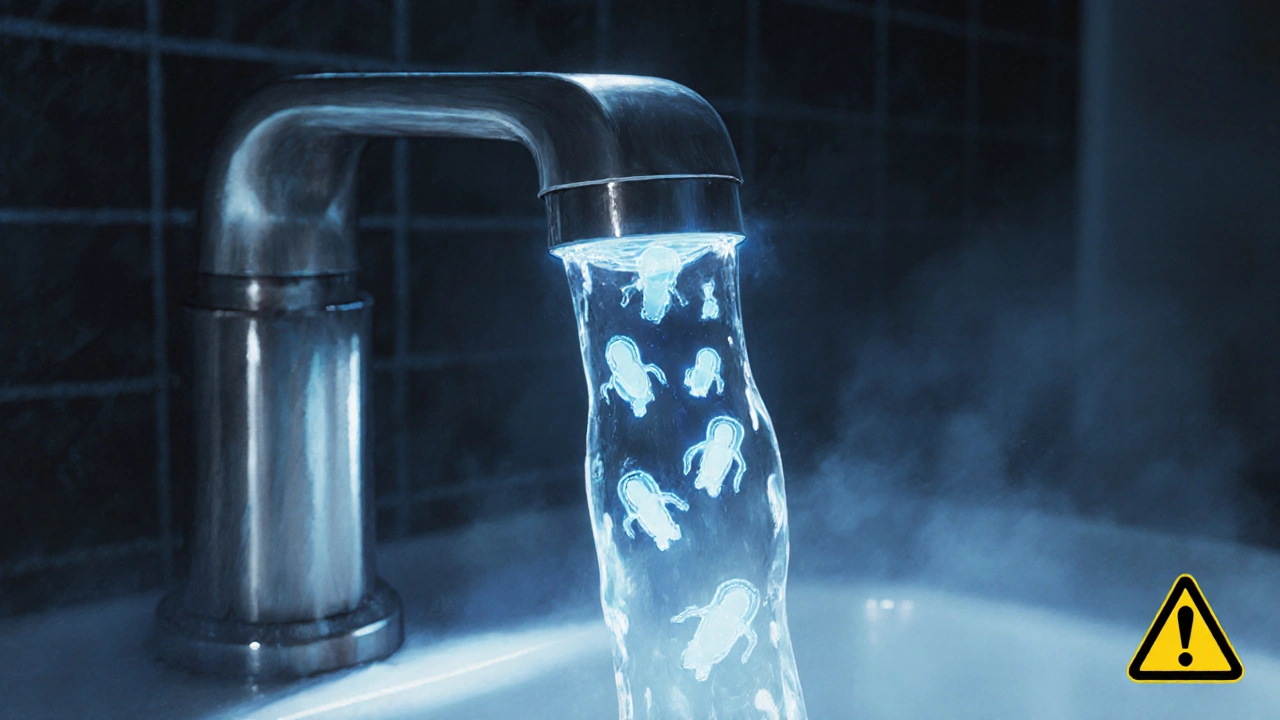
Amoeba Infections in Drinking Water: Risks, Symptoms & Prevention
Learn how hidden amoeba infections threaten water supplies, the diseases they cause, early symptoms, and practical steps to keep your tap water safe.
When you swim in a lake or splash around in a hot tub, you probably don’t think about tiny organisms in the water. But Naegleria fowleri, a free-living amoeba that can cause a rare and deadly brain infection. Also known as the "brain-eating amoeba," it’s not a parasite you catch from people—it’s found in warm freshwater and soil, and it enters your body through your nose. Once inside, it travels up the olfactory nerve to the brain, triggering something called primary amebic meningoencephalitis, a rapid and almost always fatal inflammation of the brain and spinal cord lining. This isn’t common—fewer than 10 cases are reported each year in the U.S.—but when it happens, it moves fast. Symptoms can start within 1 to 9 days after exposure and include headache, fever, nausea, stiff neck, and confusion. By the time most people get diagnosed, it’s often too late.
So where does Naegleria fowleri hide? It loves warm water. Think lakes and rivers in summer, especially in southern states like Texas and Florida. Hot springs, poorly chlorinated swimming pools, and even water from home water systems used for nasal irrigation (like neti pots) can harbor it. The key risk? Getting water up your nose. That’s why diving, jumping, or submerging your head underwater in warm freshwater increases your chance of exposure. You can’t get infected by swallowing water—only by inhaling it through the nasal passages. That’s why using distilled or boiled water in neti pots isn’t just a suggestion—it’s a life-saving rule.
There’s no vaccine. No easy cure. And treatment options are limited. But prevention is simple: avoid forcing water into your nose. Use nose clips when swimming in warm freshwater. Keep your head above water in hot springs. And always use sterile water for nasal rinses. If you’ve been in warm water and then develop a sudden, severe headache with fever, don’t wait. Tell your doctor you were swimming. Early diagnosis is the only thing that gives a fighting chance.
Below, you’ll find real, practical posts that dig into related topics: how medications interact with brain infections, how to monitor symptoms after exposure, and how public health guidelines help reduce risk. These aren’t theoretical guides—they’re written for people who want to understand what’s really out there and how to protect themselves and their families.

Learn how hidden amoeba infections threaten water supplies, the diseases they cause, early symptoms, and practical steps to keep your tap water safe.